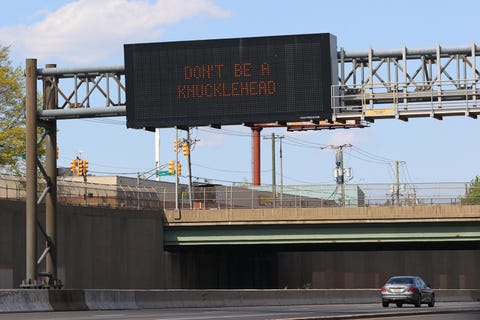
Icon SportswireGetty Images
- The Centers for Disease Control have a new publication, COVID-19 Employer Information for Office Buildings, that encourages private vehicle use over public transportation for workers.
- Employers should help pay for parking for people who drive in, the CDC says, or let workers stagger their hours so they can use the bus or the subway at less busy times.
- For restaurants, the CDC says customers should sit in their cars when they get take-our or even while waiting for a table inside.
You don’t need us to tell you that this is a different and often difficult situation we’re in during this coronavirus pandemic. Between the widespread lockdowns that, let’s hope, are behind us and the gradual reopening ahead, people will start moving and interacting more as we all wait for a vaccine. That’s going to be difficult. What we care about most, of course, is what this means for cars and driving.
The Centers for Disease Control and Prevention (CDC) is offering updated advice for dealing with the pandemic, including new recommendations for people who work in offices. Some are straightforward and could be easy to implement, like wearing face masks and holding small meetings and lunch outside when possible (good thing summer’s on the way). But other recommendations will be difficult to implement, if not impossible. How is “maintain[ing] social distancing of at least six feet” inside an elevator going to work, for example?
During the day on Sunday, the CDC adjusted its recommendations to clarify that they are “if feasible,” and that it doesn’t object to people “driving or riding by car either alone or with household members.” It also added a suggestion that employees be told to follow CDC guidance on “how to protect yourself when using transportation” if they found it necessary to use public transport methods.
There’s also a change in where an employer’s responsibility to their employees starts. The CDC says—and OSHA would agree—that “employers are responsible for providing a safe and healthy workplace.” But what about getting to and from work safely? That wasn’t necessarily in the employer purview before COVID-19 hit, but now the CDC is looking at the ways we commute to keep all workers safer. In short, it recommends private cars over public transportation.
The CDC recommends employers offer incentives for employees who usually commute on public transportation or ride sharing so they can “use forms of transportation that minimize close contact with others.” That means employers should help pay parking fees for people who drive in their own vehicles or ride in “single-occupancy rides.” But even if all employees have access to cars, local infrastructure is not set up for this kind of vehicle influx in some areas. New York City, for example, simply does not have enough parking spaces for everyone who works there to drive in each day. The suggestion to give employees money for single-occupancy rides (i.e., taxis or using ride-hailing apps) could work better, but it also requires Uber and Lyft drivers who are willing to let strangers in and out of their cars throughout the day, which is a bigger challenge now than it was four months ago.
Changes Likely Coming in Workplace, Too
Some of the CDC’s transportation suggestions should be easier to integrate into our new work life, like staggering work times. This could mean fewer people in the office at once and could also allow employees commute on public transportation during less busy times, minimizing potential contact vectors. The CDC also recommends employees wash their hands as soon as possible after their commute into work.
The CDC sees private cars as a good way to keep people socially distant from one another outside of office setting as well. In its section for restaurant and bar owners, it recommends asking customers to wait in their cars while waiting to pick up food and, if the establishment is accepting dine-in patrons, even while waiting to be seated.
This content is imported from {embed-name}. You may be able to find the same content in another format, or you may be able to find more information, at their web site.
This content is created and maintained by a third party, and imported onto this page to help users provide their email addresses. You may be able to find more information about this and similar content at piano.io

